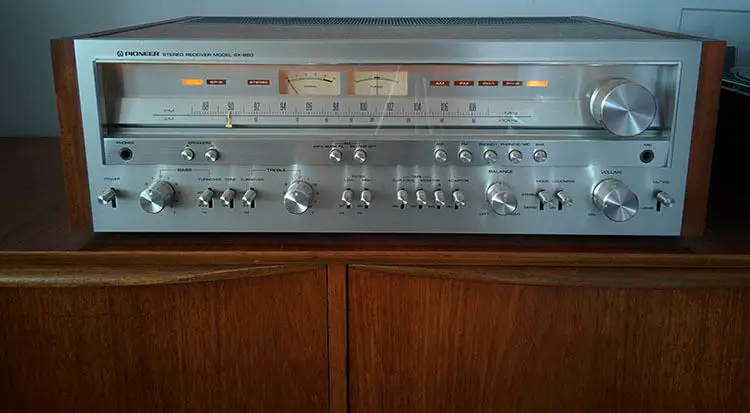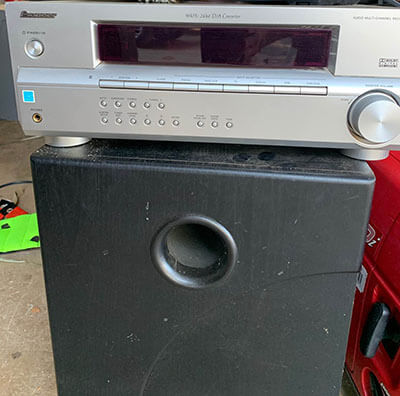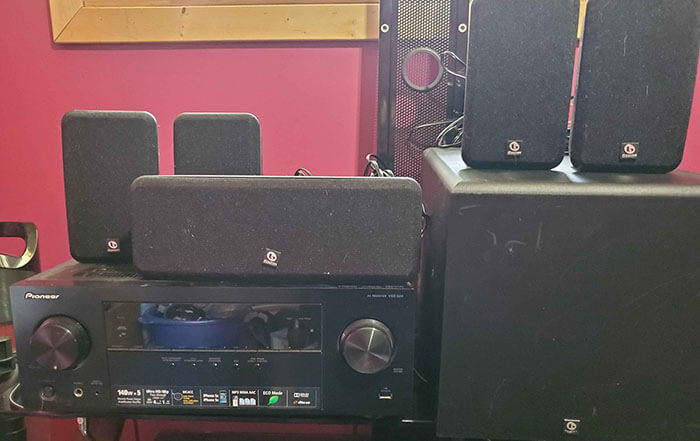You might feel at a loss when your Pioneer receiver isn’t pairing with your subwoofer. However, to your comfort, it is a very common issue. I will now demonstrate to you some of the easiest ways you can fix issues regarding your Pioneer receiver when the subwoofer isn’t working.
The most probable cause is that the whole system is not set up correctly. It could mean both from the software side or cabling issues. You should also make sure that you have a functioning receiver and a functioning subwoofer.
Some Common Pioneer Receiver Problems for Subwoofers

If you have connected everything according to the instruction manual and still you are not getting any output from the subwoofers, then you have come to the right place. Now, I will help you to diagnose some common issues through very easy methods that you can do by yourself. So, let’s get started!
Incorrect Receiver Settings
If you are not getting any output from your subwoofers, then you might have set it up incorrectly. For example, you might have selected the wrong output channel in your Pioneer receiver. You can follow these steps to solve such issues:
- If you are using a powered subwoofer, check whether your speakers are set to “large” or “small” on the receiver. You should set it to “small” regardless of the physical size of the actual front speakers. Setting this option to “large” enables the low frequencies to be sent to the front speakers, instead of the subwoofers. So, if you haven’t already, set this option to “small”
- Browse through your pioneer receiver to look for a “sub out” channel. Enable this option to establish a connection through the receiver to the subwoofer.
- Check the volume of the subwoofer. Oftentimes the volume is muted from the receiver settings and you cannot hear any sound coming out of your device due to this.
Check Cable Settings
Even if you do everything within the receiver settings, if you have incorrectly plugged in the cables then you will not get any output from your subwoofers. Let’s figure out the cabling methods.
- The receiver and the subwoofer must be connected through the connecting cable. Make sure the subwoofer’s cables are plugged into the right port in the receiver’s back. Your Pioneer receiver has a dedicated subwoofer channel. So, plug the cable into the designated port. Otherwise, the signals will not be received by the subwoofer.
- You can use a shielded subwoofer cable or RCA cable to connect the receiver and the subwoofer. Make sure you are using appropriate cables according to the model version of your devices.
- Make sure to hook up the power cable appropriately and that the light indicator is showing a proper connection in the subwoofer and also in the receiver.
Crossover Function

If you find there’s a disturbing gap between the low sounds produced by your front speakers and the subwoofers, then the crossover settings are probably set beneath the standard point. You can set it to 80Hz to check if it solves the issue or not. Or you can play with it to find a suitable spot.
You can control the crossover settings both from your receiver or by the physical knob at the back of your subwoofer. If you want to only control it from the software, then set the low pass knob to the maximum. The highest point is generally marked as “LFE” on the dial.
Reset Your Receiver
Sometimes a simple reset can fix many problems. Depending on the model of your Pioneer receiver, how you reset may vary. Generally, you have to hold on to the power button for a few seconds to see a reset option pop up on the screen. Try to reset your receiver if none of the solutions discussed work for you.
Other Issues may Happen with Pioneer Receiver Subwoofer

Apart from the issues mentioned previously, you might also face some more difficult problems in your setup. For instance, if your Pioneer receiver has any physical or hardware problems in its ports, then you won’t get any sound from the subwoofers.
Furthermore, you can also have a bad cable or loose connection in any of the ports. Also, make sure the auto switch on the back of the subwoofer is set to the On or Auto position. These issues are a bit harder to diagnose, but luckily you are less likely to face these.
For assurance, you can easily check the built-in amplifier of your subwoofer. You can follow these steps to perform a Buzz Test to figure this out:
- First of all, plug in the subwoofer and power it on. Make sure it is plugged into the LFE port in the subwoofer.
- Dial up the gain knob at least above 50%.
- Let the other end of the cable remain disconnected from the subwoofer or any other port.
- Now, gently touch the male end of the RCA cable and see if it makes a buzzing sound or not. If you cannot hear any sound, turn the gain knob up but never to the maximum capacity. If you can hear a slight buzzing noise each time you touch the end of the cable, then your subwoofer is working fine.
If you cannot hear any buzzing sound, probably your subwoofer has some issues regarding its built-in amplifier. You cannot fix it by yourself at home unless you have experience opening up these sophisticated machines. I would recommend you to contact the help of professionals in such situations.
Frequently Asked Questions
Why is my subwoofer not producing any sound?
There could be many reasons ranging from bad cables to inaccurate software settings. You have to patiently diagnose each problem to figure out why your subwoofer isn’t working.
Why am I hearing little bass from my subwoofers?
Check the gain knob in the back of your subwoofer and dial it up to have more bass from your system. Also, check the subwoofer menu in your receiver to turn up the bass response from your subwoofer.
Conclusion
It’s easy to get frustrated when you fail to understand what’s the issue with your devices. However, I have illustrated to you the most common issues you might be facing and also their easiest solutions. I really hope you are now able to fix the issue on your own and are already enjoying booming bass from your subwoofers.
Thank you for staying with me till the end. I hope to be there for you with another query some other day.
